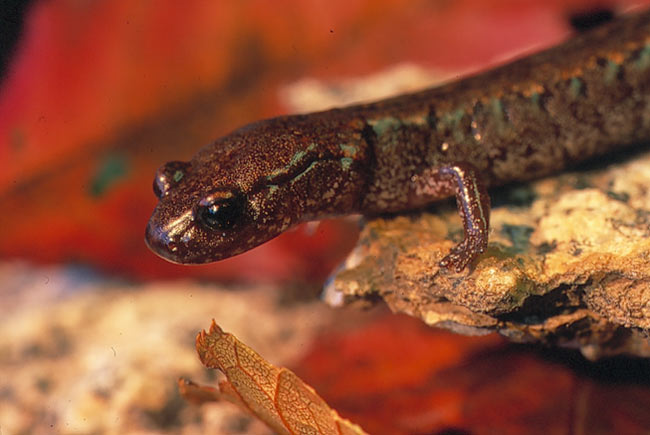New Korean Salamander Looks Just Like American Cousin

A slimy lungless salamander closely related to an America variety has been found a long way from home - in the woods of South Korea.
From early observations, the salamander looked so familiar that scientists believed it to be an American transplant.
"It resembled it so much we initially thought it might be a member of an American genera," David Wake, a biologist at the University of California in Berkeley, told LiveScience. "We were astonished at how close it looks to an American woodland salamander."
"It was the biggest surprise of my career," said Wake, who has discovered and named nearly 50 species of salamanders - about 10 percent of the world's total.
The outward appearance of the salamander is superficially similar to American species, Wake said. After closely inspecting its DNA and anatomy, it became clear that this species was distinctly different. Wake estimates that it diverged from American species 60 million years ago.
Lungless salamanders absorb oxygen right through their skin. They populate a large portion of the Americas - from British Columbia to Ecuador on the West coast, Nova Scotia to Brazil on the East - but they are extremely rare in other parts of the world. Outside of America, they live only in Italy and Sardinia, and none have ever been found in Asia.
So this brings up the obvious question: How did they get to Korea?
Get the world’s most fascinating discoveries delivered straight to your inbox.
"We suspect by the Bering Strait," Wake said. In ancient times, a land bridge up to 1,000 miles wide made the Bering Strait walkable. There may have been a time when lungless salamanders were as common in Asia as they are in the Americas today.
"One of the implications of this finding is that these North American groups were once spread all over Asia and maybe Europe," Wake said.
Exactly why most salamanders became extinct in Asia still stumps scientists. Wake suggests that there may have been a drying phase in Southern Asia, which could have ruined their habitats. Today, Korean conditions are perfect for lungless salamanders.
"The habitats in Asia are appropriate for these animals - so it is strange that they became extinct there and not here," he said.
The salamander, which was placed in the new genus Karsenia - named after its discoverer Stephen Karsen - was found nearly two years ago. The announcement was delayed, Wake explained, because it took nearly a year and a half of "fiddling" to determine exactly what they had on their hands.
Its common name is the Korean crevice salamander because it lives in limestone crevices.
These findings are published in the May 5 issue of Nature.
Related Stories
- World's Ugliest Animals
- Scientists Try to Save Largest Salamander
- Student Finds New Species of Amphibian
- Many Amphibians Threatened Worldwide
